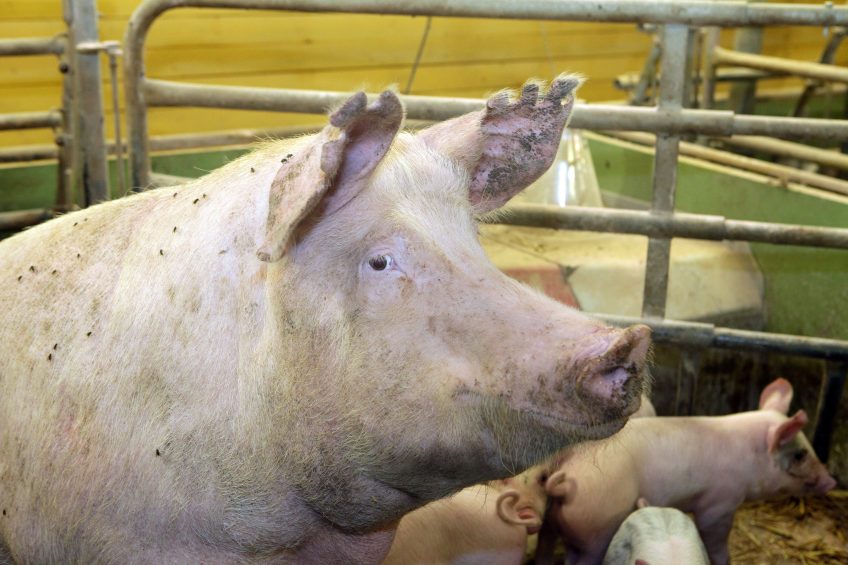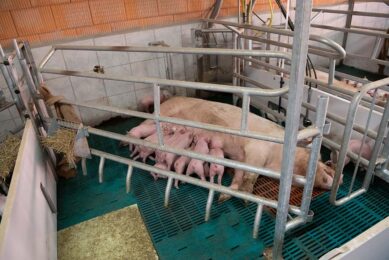Freedom farrowing strategies put to the test

Australian researchers have put ‘swing pens’ to the test – farrowing crates that can be opened on one side, giving the sow and piglets more freedom. Their outcome: confinement appears essential until day 7 post-farrowing.
The research was carried out by a team of The University of Adelaide and SunPork Farms, one of Australia’s major pig farm brands. Results became public late 2017 and are shared on the website of CRC Pork.
Reducing sow confinement until day 7
Having tried 5 different ways to house sows during lactation, the researchers concluded that confinement of sows during lactation can be reduced to the period immediately before farrowing and the first 7 days of lactation without reducing the weaned litter size and weight.
The researchers wrote that the data also demonstrated that incidences of piglet mortalities are lowest when sows (and their litters) are housed in conventional farrowing crates during, and for the 7 days after, parturition.
The aim of this study was to determine how, under commercial conditions and across summer and winter, different periods of reduced confinement during and after parturition affected sow and piglet performance and sow welfare. The researchers measured piglet survival and growth, sow body composition and sow subsequent reproduction.
The researchers investigated 5 methods:
1. Sows (145) housed in farrowing crates until weaning;
2. Sows (112) housed in farrowing crates, with sows and litters then housed in a simple pen from day 7 of lactation until weaning;
3. Sows (112) housed in swing sided crates which were shut from farrowing shed entry until day 7 of lactation;
4. Sows (118) housed in swing sided crates which were shut from the day before farrowing until day 7 of lactation; or
5. Sows (112) housed in swing sided crates which were open throughout.
One of the largest studies of its type
The work was conducted in commercial research facilities and was one of the largest scale studies of its type ever conducted, commented Pork CRC CEO Roger Campbell in his update. Weaning age averaged 26 days and average sow parity was 3.3.
As can be seen in Table 1, leaving the swing sided pens open through lactation resulted in significantly higher pre-weaning mortality than all other treatments, with farrowing crates having the lowest mortality. Piglet losses in the open pen system were 3 times higher than in farrowing crates, Dr Campbell said.
The higher mortality in the swing sided pens closed to day 7 suggests there may be a design fault, which is common with any of these types of systems, Dr Campbell wrote. The results confirm that freedom type farrowing pens, especially if left open in early lactation, can have severe adverse effects on piglet welfare and sow productivity.
Effect of season on piglet survival
Season was found not to affect piglet survival within housing treatment; however, stillbirths and early (24 hour) mortality of live born piglets was higher during summer, with piglet mortality from day 3 of lactation to weaning tending to be higher during summer than winter.
On the basis of these results, the researchers proposed 2 areas of future research:
• Develop strategies to enrich the farrowing crate, such that sow welfare and capacity to express natural behaviours are enhanced/optimised;
• Develop a larger, nationwide data set (encompassing different types of non- or reduced- confinement housing systems) to confirm the current outcomes and provide industry confidence.
The research was conducted by Dr Will van Wettere, The University of Adelaide, Australia; supported by Dr Kate Plush and Dr Dave Lines, Sunpork Farms Group South, Australia.











